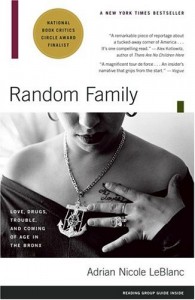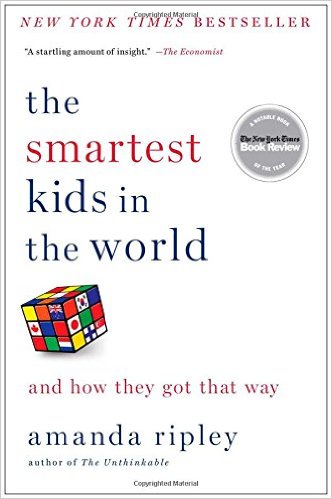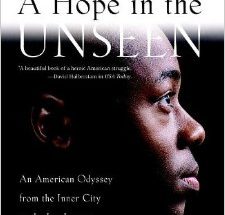
“Random Family” is at its core an exploration of how cycles of poverty and crime affect the outcomes of children in low-income neighborhoods. While Adrian Nicole LeBlanc chronicles the lives of her two young protagonists and their families as they navigate poverty, crime, drugs and teen pregnancy in the Bronx, she succeeds in revealing the bigger picture. The book’s main success is its ability to subtly tell the story of the systemic barriers that members of the underclass face from birth.
Much of the time, educational policy fails to consider the role of the home in the lives of children. Experts often maintain that if only we focus on good instruction and a solid curriculum, every child can gain the knowledge they need to succeed in life. But, as can be seen in LeBlanc’s book, this is often not the case. Children born to teen mothers and jailed fathers are frequently disadvantaged from the beginning and this gap in opportunity is not as easily remedied as we would like to think.
Aside from bad schools in high-crime neighborhoods, LeBlanc’s characters face a host of other struggles that are the norm in the ghettos of the Bronx but are foreign to middle-class children. They face repeated sexual abuse, fractured family environments, frequent homelessness and other family stressors that impede their academic success. At home, they are expected to help their struggling mothers and watch their siblings instead of work on their homework. Mercedes, the eldest daughter of one main character, is a prime example as she struggles with the absence of her father and watches her childhood slip by as she helps care for her four young siblings.
Low-income parents are similarly limited in what they can give to their children. For Coco, one of the main characters in the book, scraping together enough money to feed her kids and avoid eviction is a daily struggle. Lack of access to contraceptives means the women in the book often end up with four or five children before they even enter their 20s, which leaves them overwhelmed, under-resourced and frustrated.
Teen pregnancy forces them out of school, which means they can’t find employment later on. When they try to go back to school, lack of childcare once again forces them to drop out in a never-ending cycle. They deal with their large families alone, often having been abandoned by absentee or jail-bound fathers. They struggle to find childcare so they can take their children to school and to appointments. At the end of the day, although they constantly point to education as the only escape from the ghetto, they don’t have the knowledge or the resources to help their children succeed.
One of the things that struck me the most as I read this book was how out of touch the system is when it comes to dealing with children in poverty. During Mercedes’ meeting with a probation officer, we see the authority figure sternly instructing Mercedes on how she should behave according to the rules that are the norm within institutions. She tells her to listen, to set the table, to help out at home.
Meanwhile, the reality is that there is no table at their house and Mercedes spends most of her time taking care of her siblings. To me, it was a very telling moment that showed the disconnect between our largest systems and the poorest families they aim to serve. In schools, children are expected to behave according to middle-class rules and norms despite the fact that their realities at home are so vastly different.
This divide is perhaps the reason so many intensive programs that aim to equalize opportunities for children in poverty don’t register long-term effects. When Coco’s daughters went to Camp Ramapo, a camp for at-risk children, they seemed to be transformed. But, once they were back at home, they were no longer in an environment that reinforced and encouraged their newly acquired skills. Their mother didn’t understand these new “middle-class” values and behaviors, and neither did their community.



